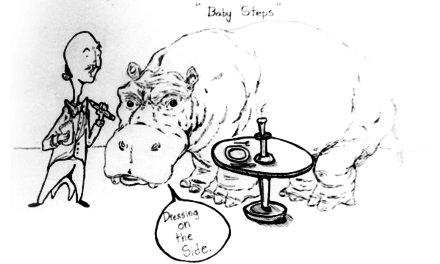I was born into the racial reckoning set in motion by Brown v. Board of Education and the Civil Rights Movement, and what many hoped would be the end to racial segregation. Explicit posters and signs may be gone —“No Irish Need Apply,” “We Serve Whites Only — No Spanish or Mexicans,” “Gentiles Only,” “Chinese? No! No! No!” “No Indians, No Dogs Allowed”— but a look at economic indicators or the demographics of neighborhoods and educational institutions suggests that removing signs was the easy part. As I am now living through yet another racial reckoning in the U.S., I’ve come to the realization that in all of our dialogues, conversations, and reconsiderations, we never get to the heart of the matter. We look at the ills of segregation, never realizing that they are symptoms of a persistent underlying disease: an ideology of supremacy that equates whiteness with Americanness. Please understand that an ideology of whiteness is not the same as an identity of whiteness. Many who identify as white do not buy into the ideology that says they are superior and that fuels the many segregations that make achieving parity in the U.S. so difficult.
The problem of racial segregation started early on in the history of the U.S. when a myth was created: that there is a WE composed of “real” Americans who must protect themselves from the threat of a THEY. By the time English voyagers set sail for what would become the U.S., the lies of racist hierarchies were circulating widely, and gave the English settlers who would shape pre-national America a conviction in their own superiority, not only over Africans and Indigenous peoples, but also over other ethnicities—Scottish, Irish, Welsh and others, all who in the U.S. would subsequently become known simply as white. As the nation expanded, settlements developed, and land seized from Indigenous peoples was turned into plantations where an enslaved Black labor force created the economic engine powering American wealth. A rationale was needed to reconcile the ideals of democracy continually spouted by the Republic with its actuality. Written histories, song, art, literature, music, all were enlisted to repeat a myth of exceptional pilgrims crossing the Atlantic in search of religious freedom and under the blessing of God given the divine right to conquer an unforgiving landscape and its peoples. Sadly, statutes write this myth into the laws of the nation, and practice followed. The rationale was born and with it the surety that white supremacy would become a bedrock of national identity.
White supremacy presented problems for a nation that was multiracial from its inception. It engendered laws that had terrible real-life consequences for many: the loss of homes and dispersal of communities caused by the government-sanctioned expulsion of Indigenous peoples with the Removal Act of 1830; the 13th Amendment designed to end slavery yet leaving a clause where someone convicted of a crime might still be enslaved, thus opening the door to Black codes that reinstituted “slavery by another name”; the land loss and subjection of many Mexicans to mob violence due to lax enforcement of provisions in the Treaty of Guadalupe Hidalgo; the many reenactments of the Chinese Exclusion Act over the decades from 1882 to 1909 in response to fears of labor competition and cultural mixing; Franklin D. Roosevelt’s Executive Order 9066 that forced the relocation and incarceration of people of Japanese ancestry, 62% of them U.S. citizens. We have sacrificed much to this ideology of whiteness, and always with the justification that “real” Americans have the right to control their own destinies. The divisiveness continues undergirding arguments over immigration policies, the carceral state, racial, and sexual identities — and until we get to the heart of why some continue to cling to this ideology, how it influences everything from health policy to political and judicial institutions, considerations of diversity and racial reckonings are akin to sprinkling water droplets on a fire.
In 1998, I wrote the following in my book “Whiteness Visible”: “To sustain an ideology of whiteness is to sanction the violent acts of persons who may be as equally marginalized as those they victimize and to nourish a growing enmity toward those perceived as enjoying its advantages.” I thought of this during the Capitol riots on Jan. 6, 2021 and saw nothing contradicting that statement; yet, I take heart in the many Americans who participate in social justice advocacy, who know that the idea of the U.S. is too good to leave in the hands of elected officials not up to the task of being public servants, or in the hands of those so wealthy their interests can never align with the common interest. Those Americans know that undoing ideologies fueling white supremacist thought take down the borders that separate us from neighbors, coworkers, potential friends and from getting to know lives beyond our own.
Valerie Babb is the Andrew Mellon Professor of Humanities in African American Studies and English at Emory University.
This article is one part of “1963,” an investigative opinion project. Read the rest here.




